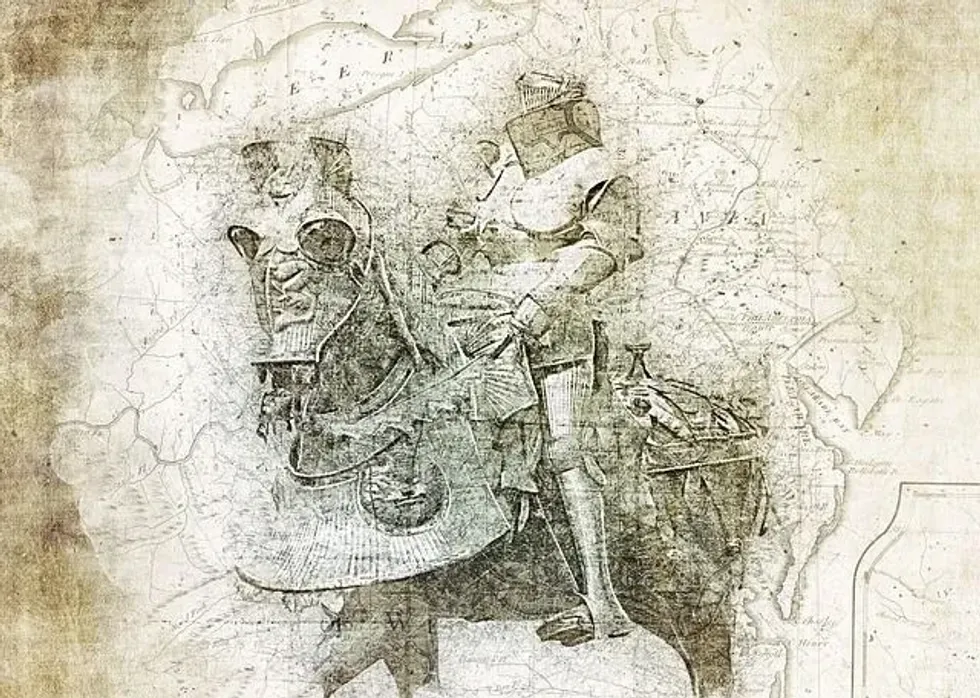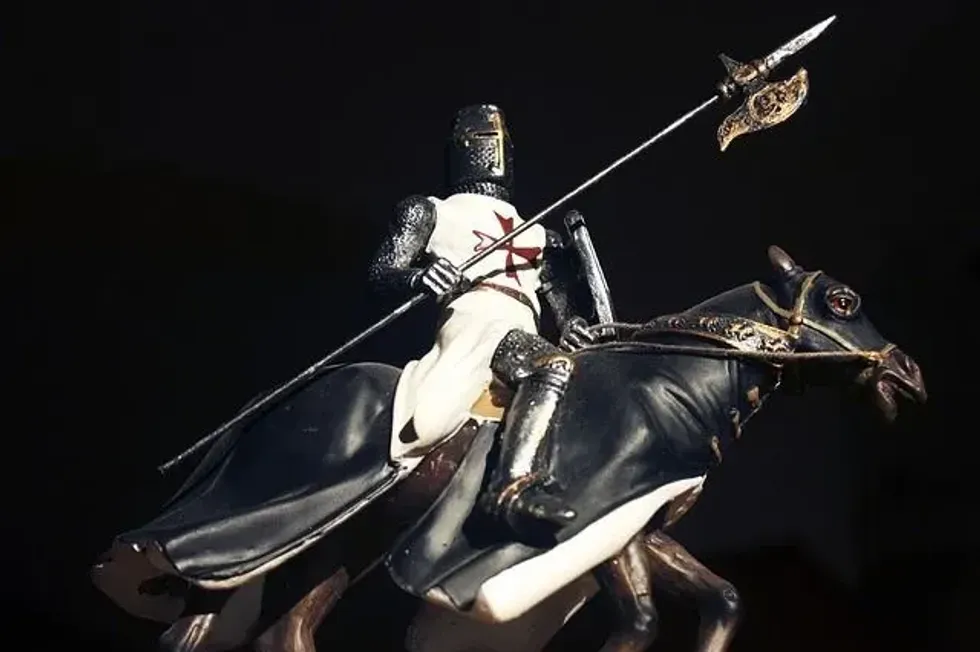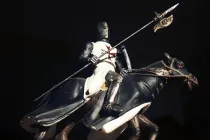73 Crusades Facts: Learn About These Events In The Medieval Period
Crusade at large is known as an 'indefatigable maneuver' for a change that could be political, social, and or religious.
Christians and crusades are related in the medieval period. Crusaders believed in the holy war, a call from the Pope to reclaim the Holy Land of Jerusalem from the Muslims.
The church led the series of wars and was backed by all society sections, including kings and peasants. This was more of a war for salvation than for any sort of material gain. Many of these crusades spread over a considerable period, from the fall of Rome in Europe to the beginning of the Renaissance period.
Let us learn more Crusades Facts in this article.
Effects Of Crusades
A war never fetches anything positive in reality. And that is true in the case of the crusades as well. Whatever be the motive, war is always a negative force that drives people crazy to stand for themselves even while acting in total brutality.
In 1212 the 'Children's Crusade' was led by a French and a German child. 'Children's Crusade' was one where thousands of children marched towards the Holy Land, never reaching their destination and never being heard of again.
Likewise, there were the 'Shepherds' Crusade' and the Crusade of the poor who could never make a better life.
Many crusaders lost their lives in the name of the holy war, and many crusades in the name of the holy war continued until the 16th century the Renaissance period.
But then, with the calls for crusades by the Pope Roman Catholic Church rose to power and became a wealthy establishment.
European countries saw an increase in trade and technology because of these crusades.
Cause Of Crusades
The main cause that triggered the crusades that lasted for centuries was the expansion of Muslim kingdoms in the Medieval period. The Muslim wars claimed many states formerly under Christians, and reclaiming the Holy Land of Jerusalem was a big motive.
In the seventh century, Arab-Byzantine wars broke out.
By 1025, Byzantine emperor Basil II expanded his territory to the maximum till eastern Iran and controlled Bulgaria and southern Italy.
Thus Arab-Byzantine was successful in vanquishing the widespread piracy across the Mediterranean Sea.
Thus, in the Middle East, the Byzantine Empire had competition from the Slavs, other Muslim neighbors, and Western Christians.
Also, the Byzantine Empire had competition in Italy, from the Normans to the north Cumans, Serbs, and Pechenegs, and the east from Seljuk Turks.
The Seljuk Turks' recent conversion to Islam changed the Middle East political scenario.
Byzantium's army defeated these Turks in the Battle of Manzikert in the early 11th century.
Atsiz, who was a famous Turkish warlord, seized Syria and Palestine. He also captured Jerusalem from the Fatimids.
And soon after, there were reports of oppression of Christian pilgrims to Jerusalem which resulted in the First Crusade.
The causes for the crusades were many, including religious, political, economic.
The Christian army's reclamation of the Holy Land from Muslim rule was important to the church and others.
The Pope at that time wanted to strengthen the papacy in the region of Italy to proclaim as the head of the church.
Knights in the army fought not only for material gain but also for salvation.
People in business gained control over the business on land and shipping routes.
Each empire wanted to reclaim the lost territory and control Jerusalem and surrounding areas.
Even common people participated in these crusades, including the orthodox Christians, for religious and material benefits, including tax exemption or speeding up a pending case.
Imad ad-Din Zengi was a Muslim ruler who introduced Jihad to the ongoing conflict.
With the very powerful Syrian emirates, Imad ad-Din Zengi became a threat to the franks, as others called the crusaders.
The rise of Zengi and the fall of the crusaders in the absence of a strong leader led to the capture or siege of Edessa in 1144, when the city's population was massacred.
A recapture of the Eddessa by the crusaders happened after two years with the death of Zengi.
After the death of Zengi, his son took over the citadel of Edessa, and the population of the city was massacred again.
Thus, this raised the cause for a Second Crusade led by European kings who were more organized.
But again, the Second Crusade also saw the Muslims unite under the leadership of Saladin and the fall of Jerusalem.
Subsequent crusades were resultant of previous crusades where at one time, Muslims were able to reach central Europe as well.
Examples And Types Of Crusades
There were a number of crusades in history, and up to seven of them are considered major crusades, whereas multiple minor crusades saw the rise and fall of both armies.
Council of Piacenza and Council of Clermont, under the leadership of Urban II, mobilized Western Europe to the Holy Land, which marked the beginning of the First Crusade in 1095.
With Alexios I, emperor of Byzantine against the invading Turks, pope Urban II initialized armed pilgrimage, a new kind of war with a battle cry 'Deus lo volt,' which meant 'God wills it.'
The crusade, where common people like peasants were also involved, was led by Peter the Hermit and came to be known as the People's Crusade, which was fought amongst Christians and Jews.
The People's Crusade was so cruel that about one-third of the Jewish community was slain down.
The First Crusade included winning over Nicaea.
After the First Crusade, the Battle of Dorylaeum and the seizing of Antich were major events.
Winning over the city of Jerusalem by Christian crusaders in 1099 was the major milestone and hence the establishment of the Kingdom of Jerusalem.
The battle of Ascalon was the end of the First Crusade after the siege of Palestine.
The Kingdom of Jerusalem resulted in three other crusader states as well. The Principality of Antioch, County of Edessa, and County of Tripoli.
Most of the crusaders went back home after the battle of Ascalon, and crusader states were now in the hands of the few who stayed behind to be protected.
Godfrey of Bouillon was elected as the 'Defender of the Holy Sepulchre' to protect the city and kingdom of Jerusalem.
But again, with the rise of Muslim king Zengi and later his son and siege of Edessa, the Second Crusade by the European kings who in answer to the call by Pope Eugen III in his Quantum predecessor in 1145.
Louis VII, who belonged to France and Conrad III of Germany, was the first to respond to the call of the Second Crusade.
But alas, there was a lot of disbelief, and there was no coordination amongst both armies. This led to large-scale failures with few showers of success in between.
The Second Crusade was, totally, an utter failure and ended by 1147, though Eugen III persuaded crusaders to other regions.
Thus, there was a rise in the Muslim power, especially from Syria, which led to the Third Crusade's foundation.
The rise in the power of Zengids, especially Nur-ad-Din and later Saladin, saw the capture of the city's under Christian crusaders by the Muslims.
From 1147-1187, the land saw many crusader wars and the loss of lives and wealth with unsettled social establishments.
The rise of Saladin and his subsequent wins at Warfield led to the siege of Jerusalem.
However, a large army of crusaders ever put together under the leadership of Guy of Lusignan resisted Saladin, the then king of Jerusalem.
The fall of Jerusalem into the Muslim hands began the third crusade by western European kings, answering the call for the Third Crusade by Pope George VIII.
Frederick Barbarossa and Richard I of England were the ones who took the lead.
After which, Pope Innocent III called for the Fourth Crusade.
Thus there was a fall and rise of Christians and Muslim powers over the years.
More crusades followed up to the Seventh Crusade. They were considered major crusades, with many smaller ones fought in between and later in the name of the Holy Land.
In 1212 the Children's Crusade was led by a French and a German child.
Children's Crusade was one where thousands of children marched towards the Holy Land, never reaching their destination and never being heard of again.

History And Origin Of Crusades
The origin of the crusades can be said to be the thought raised amongst Christians to recapture their land of Jerusalem from the hands of Muslims. Since this land was important for both the communities, once the crusade by Christians began, there was no looking back, and a series of these crusades continued over many years.
Crusades are used to define the religious wars, mainly between Christians and Muslims.
Spread for many centuries, crusades were expeditions to the Holy Land.
In the medieval period or middle ages, crusades were a purposive activity to regain control over Jerusalem from the Muslim rule.
The military expedition against Moors in the Iberian Peninsula became known as the 'Crusades.'
Northern Crusades were those battles against Finnic, Baltic, West Slavic, and Pagan people.
Crusades were sanctioned by the church. It is strongly believed that they were a part of expanding the Latin kingdom.
Other than those directed by the church, there were many battles by citizens as well and came to be well known as the popular crusades of the ordinary.
Pope Urban II promulgated the First Crusade in the year 1095.
Pope Urban II proposed an armed pilgrimage to the city of Jerusalem.
Pope Urban II called for military expeditions to support Alexios I, the Byzantine emperor in opposition to the Seljuk Turks.
The call received a huge response from sections of Western Europe, with each having different interests that included spiritual salvation, feudal obligations, renowned interests, and economic and political advantages.
And thus, crusades were led by the king (sometimes) but more often by organized army personnel who were approved papal indulgences.
The success of these initial crusades led to crusader states, namely the County of Edessa and the Principality of Antioch and the Kingdom of Jerusalem, and the County of Tripoli.
The fight between the two communities, namely Christians and Muslims, for the Holy Land became known as the 'Reconquista' by the Christian community.
The war between them ended at the end of the 15th century after the fall of the Emirate of Granada, which belonged to the Muslim community.
Later these crusades were also initiated against Christian heretics.
Interestingly, the Muslim community used to call these attacks Franks and were considered barbaric due to the cruelty involved.
The crusades that began in the early 11th century ended in the 17th century after the War of the Holy League.
The history of the crusades teaches us about the importance of peace and projects the losses incurred by wars on the generations of humankind.
FAQs
Why did Richard the Lionheart not take Jerusalem?
Richard the Lionheart did not take Jerusalem because of the discordance amongst his army's high ranks. There was a time-lapse due to multiple reasons, and months passed by as he was on his way to the city. Discordancy in his army ultimately weakened it as the bad weather and supply shortages added a disadvantage to his march.
Why was Richard called Lionheart?
'Coeur-de-Lion' means 'lion heart.' And Richard was famously known as Richard the Lionheart. He was a very brave fighter and courageous crusader. He had many victories to his credit against Saladin. Saladin was a leading Muslim who was then occupying Jerusalem. He was a chivalrous medieval king who was very well known for revolting against his father, Henry II.
What were the major battles of the Crusades?
There have been multiple battles of the crusaders in history. But few were considered the major battles, and they can be named as follows: First Crusade, Second Crusade, Third Crusade, Fourth Crusade, Crusade of Frederick II, Crusades of Louis IX. All these battles spanned more than two centuries.
What does a crusader mean?
Crusader, in this case, is a person who partakes in the Christian military peregrination over three centuries to take over the Holy Land from the Muslims. For crusaders, Christianity meant a battle of life to save their souls and win the Holy Land.
How did the crusades affect Europe?
The crusades affected Europe both in positive and negative ways. There was religious polarization amongst Christians, Muslims, and Jews and consequent social impact on society. Of course, the crusaders opened new avenues and scopes which undermined serfdom and opulence. This led to increased international trade and exchange of knowledge, thus also profiting Europe.
Who was the last crusader?
It is believed that King Edward I of England was the person who led the last expedition of the crusaders but accomplished very little. The Holy Land's last Crusade was lost to the Muslims of Mamluks and is known as the end of the crusaders.
We Want Your Photos!
More for You
Bachelor of Science specializing in Botany, Master of Science specializing in Clinical Research and Regulatory Affairs

Sridevi ToletyBachelor of Science specializing in Botany, Master of Science specializing in Clinical Research and Regulatory Affairs
With a Master's degree in clinical research from Manipal University and a PG Diploma in journalism from Bharatiya Vidya Bhavan, Sridevi has cultivated her passion for writing across various domains. She has authored a wide range of articles, blogs, travelogues, creative content, and short stories that have been published in leading magazines, newspapers, and websites. Sridevi is fluent in four languages and enjoys spending her spare time with loved ones. Her hobbies include reading, traveling, cooking, painting, and listening to music.
Disclaimer
1) Kidadl is independent and to make our service free to you the reader we are supported by advertising. We hope you love our recommendations for products and services! What we suggest is selected independently by the Kidadl team. If you purchase using the Buy Now button we may earn a small commission. This does not influence our choices. Prices are correct and items are available at the time the article was published but we cannot guarantee that on the time of reading. Please note that Kidadl is a participant in the Amazon Services LLC Associates Program, an affiliate advertising program designed to provide a means for sites to earn advertising fees by advertising and linking to Amazon. We also link to other websites, but are not responsible for their content.
2) At Kidadl, we strive to recommend the very best activities and events. We will always aim to give you accurate information at the date of publication - however, information does change, so it’s important you do your own research, double-check and make the decision that is right for your family. We recognise that not all activities and ideas are appropriate for all children and families or in all circumstances. Our recommended activities are based on age but these are a guide. We recommend that these ideas are used as inspiration, that ideas are undertaken with appropriate adult supervision, and that each adult uses their own discretion and knowledge of their children to consider the safety and suitability. Kidadl cannot accept liability for the execution of these ideas, and parental supervision is advised at all times, as safety is paramount. Anyone using the information provided by Kidadl does so at their own risk and we can not accept liability if things go wrong.
3) Because we are an educational resource, we have quotes and facts about a range of historical and modern figures. We do not endorse the actions of or rhetoric of all the people included in these collections, but we think they are important for growing minds to learn about under the guidance of parents or guardians.







